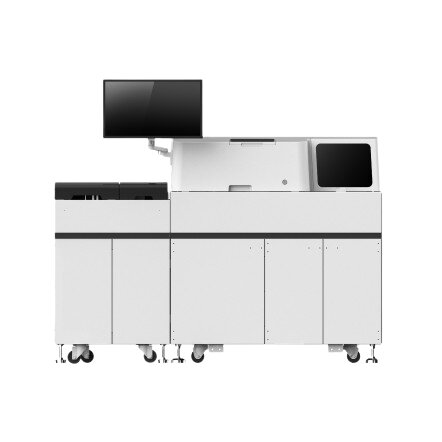Sensitive Detection Method Identifies Protein Clumps in Parkinson’s Disease Skin Samples
By LabMedica International staff writers
Posted on 02 Nov 2020
A sensitive detection method usually used to identify aggregated prion proteins has been adapted for the diagnosis of Parkinson's disease in skin samples.Posted on 02 Nov 2020
An unmet clinical need in Parkinson's disease (PD) has been the identification of biomarkers for diagnosis, preferably in easily accessible tissues such as skin. In this regard previous immunohistochemical studies have detected pathological clumping of alpha‐synuclein (aSyn) protein in skin biopsies from PD patients.

Image: A structural model of human alpha-synuclein protein (Photo courtesy of Wikimedia Commons)
To identify aSyn aggregates in skin samples, investigators at Iowa State University (Ames, USA) used a real‐time quaking‐induced conversion assay. Real-time quaking-induced conversion (RT-QuIC) is a highly sensitive assay generally used for prion detection. The "quaking" in the name of the technique refers to the fact that samples in the RT-QuIC assay are literally subjected to shaking. This action breaks apart aggregates of prion protein (PrP) that are then further incubated, amplifying the amount of misfolded PrP to detectable levels.
The investigators adapted the RT-QuIC assay to determine the seeding kinetics of the aSyn present in the skin from autopsied subjects consisting of frozen skin tissues from 25 PD and 25 controls and formalin‐fixed paraffin‐embedded skin sections from 12 PD and 12 controls.
Results of the analysis revealed that the assay had correctly identified 24/25 PD and 24/25 controls using frozen skin tissues (96% sensitivity and 96% specificity) compared to 9/12 PD and 10/12 controls using formalin‐fixed paraffin‐embedded skin sections (75% sensitivity and 83% specificity). These results clearly demonstrated the feasibility of using skin tissues for clinical diagnosis of PD by detecting pathological aSyn.
"Since there is no easy and reliable test available for the early diagnosis of Parkinson's disease at present, we think there will be a lot interest in the potential use of skin samples for diagnosis," said senior author Dr. Anumantha Kanthasamy, professor of biomedical sciences at Iowa State University. "Testing skin samples could lead to earlier detection of Parkinson's disease. Earlier diagnosis could allow physicians to test therapeutic strategies designed to slow or prevent the development of advanced symptoms."
The skin test paper was published in the September 22, 2020, online edition of the journal Movement Disorders.
Related Links:
Iowa State University













